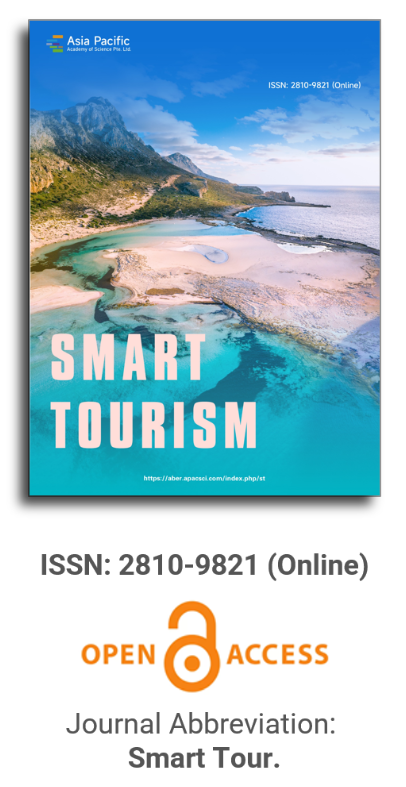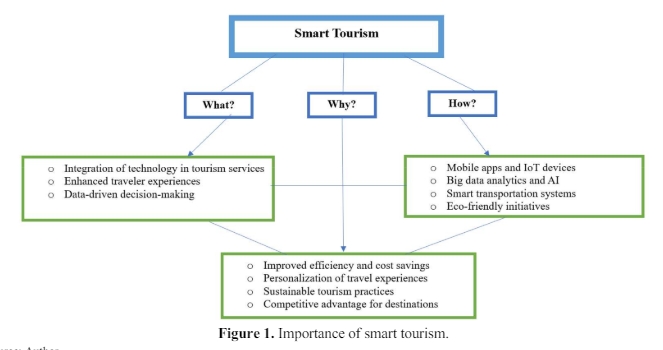


Trends and factors in the development of world tourism in the post-pandemic period
Vol 4, Issue 2, 2023
Download PDF
Abstract
This article is devoted to the study of modern factors and trends in the development of world tourism. Researching the impact of the pandemic on the state of modern tourism is extremely relevant, as COVID-19 has had a significant impact on the tourism industry worldwide. Various factors and trends in the development of this process, which are affected by the pandemic, were considered. That is why the study determined that the COVID-19 pandemic primarily led to the restriction of movements and the closing of borders between countries, which significantly reduced the volume of international travel. The analysis was carried out taking into account such factors as travel restrictions. The introduction of restrictions on international and domestic travel has become one of the main measures to combat the spread of the COVID-19 virus. This led to a sharp reduction in tourist trips and a significant deterioration of the global tourism sector. Also, the loss of revenue when the travel-related tourism sector faced severe financial difficulties due to the pandemic. Cancellations, border closures, and restrictions on international flights were found to have resulted in a significant loss of revenue for companies and hotels and affected employment in the sector. Differences in recovery have been identified when the recovery of international tourism after the pandemic is uneven in different regions of the world. Some countries and regions that quickly implemented effective measures to control the spread of the virus began to recover earlier than others. This led to the emergence of new “tourist hotspots” and the redistribution of tourist flows. New trends in tourism have been identified. The COVID-19 pandemic has caused a change in the preferences and behavior of tourists. Safety, health, and hygiene have become the main priorities when choosing a direction and types of recreation. As a result, the popularity of ecological tourism is growing, and new formats of tourist services are emerging, such as virtual tours and remote travel. In general, the COVID-19 pandemic has a serious and long-term impact on the current development of world tourism, leading to changes in the preferences and behavior of tourists, as well as causing a redistribution of tourist flows and difficulties of a financial nature in this area.
Keywords
References
- United Nations World Tourism Organization. World tourism barometer. Available online: https://www.eunwto.org/toc/wtobarometereng/ (accessed on 14 October 2023).
- YouGov. Travel & transport. Available online: https://yougov.co.uk/topics/travel (accessed on 14 October 2023).
- The International Air Transport Association. Newsletters and blogs. Available online: https://www.iata.org/en/publications/newsletters/ (accessed on 14 October 2023).
- American Express Travel. 2023 global travel trends report. Available online: https://www.americanexpress.com/en-us/travel/discover/get-inspired/Global-Travel-Trends (accessed on 14 October 2023).
- American Express Travel. American Express reveals 2023 top travel trends. Available online: https://about.americanexpress.com/newsroom/press-releases/news-details/2023 (accessed on 14 October 2023).
- UncleRon. Travel stock alert—Airlines updating financial outlooks. Available online: https://financenewslive.com/travel-stock-alert-airlines-updating-financial-outlooks/ (accessed on 14 October 2023).
- Booking. Case studies. Available online: https://business.booking.com/en-us/case-studies/ (accessed on 14 October 2023).
- United Nations Educational, Scientific and Cultural Organization. Culture (Ukrainian). Available online: https://www.unesco.org/ru/culture (accessed on 14 October 2023).
Supporting Agencies
Copyright (c) 2023 Natalia Zatsepina
License URL: https://creativecommons.org/licenses/by/4.0

This site is licensed under a Creative Commons Attribution 4.0 International License (CC BY 4.0).

Prof. Hung-Che Wu
Nanfang College, Guangzhou
China
Indexing & Archiving
Asia Pacific Academy of Science Pte. Ltd. (APACSCI) specializes in international journal publishing. APACSCI adopts the open access publishing model and provides an important communication bridge for academic groups whose interest fields include engineering, technology, medicine, computer, mathematics, agriculture and forestry, and environment.



.jpg)
.jpg)

.jpg)

